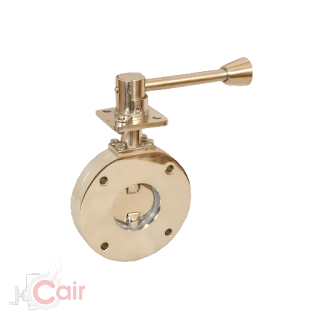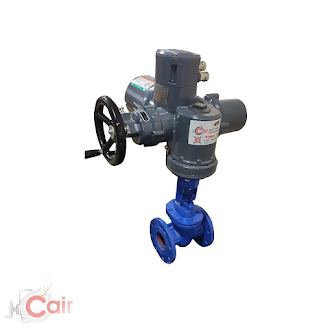Difference Between Electric Solenoid Valve and Motorized Ball Valve
Valves can solve a variety of issues in different ways, so you have a few options to choose from. By making the right choice based on your specific needs, you can save time and money.
The most frequently asked question we receive from our customers is whether a motorized ball valve is better than a solenoid valve or which is better. In this article, we will analyze the advantages and disadvantages of both types of valves.
WHY USE A VALVE?
Fluids, gases, or air can be controlled through valves. The valve is a vital component of everything from simple household appliances (like sprinkler systems) to massive mechanical systems (such as rocket ships from NASA and SpaceX). Most people don't even realize that their garden hoses have valves.
Unmanned plants are taken care of by motorized valves. In addition to opening, closing, dosing, and distributing, they rely on electric motors. Either in-house or remotely operated automated systems can be used to run them. When choosing the best value for your situation, you can make the plant run more efficiently by understanding the difference between a motorized ball valve and a solenoid valve.
WHAT IS A SOLENOID VALVE?
An electric current is used to operate a solenoid valve. Solenoid coils act as electromagnets in valve systems, controlling the flow of current through valves. Solenoid valves are closed with a plunger blocking the opening when they are at rest. By running an electric current through the solenoid, a magnetic field is created, which opens the valve. Magnetic fields lift plungers and open valves.
A normally open valve, on the other hand, would remain open until an electric current shuts it.
Fluids, air, and gases are controlled by solenoids because the valves can distribute, release, or mix elements precisely. Businesses use solenoid valves for a variety of purposes because they work with a variety of substances.
In addition to being reliable, durable, and compact, solenoids require very little power.
WHAT IS A MOTORIZED BALL VALVE?
Flow is controlled by rotating a ball with a hole in the middle powered by motors. If the hole is aligned with the flow, the valve is fully open, and if it is turned perpendicular to the flow, it is closed. In contrast to solenoid valves, most electric ball valves do not require power to hold their positions. Manually operated ball valves are available that are electrically actuated.
Flows involving large volumes work well with ball valves. Airports use them to de-ice aircraft, greenhouse managers use them to water greenhouses, and farmers use them to water large farms. Sprinkler heads in buildings equipped with fire suppression technology are controlled by ball valves.
By using electric controls, motorized ball valves can control liquid, gas, or air. Several valves are used in large systems to manage them.
TYPES OF VALVES
The first step is to choose between a solenoid valve and a motorized ball valve. There are also different subtypes of these two types of valves. There are several situations in which each can be useful.
Types of Solenoid Valves
Solenoid valve with two ports: This type of valve has an inlet and an outlet connected to a fluid source. There is only one way to operate a two-way valve: to open or close it. When the valve closes, the fluid is shut off, and when it opens, it flows.
Solenoids with three ports are known as three-way solenoids. There are three types of controls, normally closed, normally open, and general type. Three-way valves allow you to divert flow through different ports.
A four-way solenoid valve works like a double-acting cylinder. There will be one or two exhaust ports, two cylinder ports, a pressure port, and a few connectors.
Types of Motorized Valve
Motorized quarter-turn valves open and close a port using a 90° (quarter-turn) turn. Ball valves, plugs, chokes, and butterfly valves are used to open and close these actuators to precisely control fluid flow.
These actuators use balls, gates, or other tools to open and close valves with complex requirements.
Flow is controlled by linear-motorized valves, which work with control valves or diaphragm valves.
PROS AND CONS OF SOLENOID VALVES
Solenoid valves have many benefits and just a few drawbacks. Make sure you always use the right type of valve for the right application.
They can be used with AC or DC currents, and they open and close quickly. The channels can be opened or closed almost instantly to direct the flow of media within the system.
As a result of their simple design, solenoid valves consume relatively little power. Additionally, they require only electricity to change and hold the on position, not to maintain their normally open or normally closed positions.
A solenoid valve must continuously draw power from its source in order to maintain its position. If the valve is left in the on position for too long, heat can build up within the coils and burn out the valve.
Easy to install and maintain, they are an affordable option for many systems. A solenoid valve can be rebuilt by replacing worn-out coils or other internal parts, unlike the alternative ball valve.
Due to different internal configurations in the flow path, they have limitations with back pressure and inlet pressure.
Solenoid valves also suffer from pressure differentials that require pilot designs. The flow can be handled by solenoids, but if you need more, consider using a motorized ball valve. There are no manual overrides for solenoids, so users must take into account the potential for water-hammer from rapid closing.
Diaphragms and plungers are usually found inside solenoid valves. When particles are present in the line, this type of mechanism can cause issues. Debris will prevent the valve from sealing properly, causing it to leak. Ball valves are another type of valve that can be serviced, and this is another area where they excel. Their lack of a diaphragm allows them to handle more particulates or random debris.
PROS AND CONS OF MOTORIZED BALL VALVES
This valve can maintain a high flow rate despite a pressure drop, which is one of its advantages. Because they do not have a diaphragm, they have a greater Cv value, or flow, than solenoid valves of the same size.
Similar to solenoid valves, they are an affordable valve type that is fairly easy to install. Several devices, including PCs and Raspberry Pis, can be used to integrate them into automation systems. As a result of not requiring continuous power, motorized ball valves also have a lower operating cost than solenoid valves. Ball valves don't burn out like solenoids, which is also beneficial to users.
In comparison with solenoids, motorized ball valves move more slowly. Despite their speed, they do not operate instantly. As long as the liquid or gas does not abruptly and suddenly stop, this could be beneficial for some systems susceptible to the water hammer effect.
An electric-actuated ball valve also has the disadvantage of wearing out inside the valve. It is possible for suspended particles to end up in your system and cause wear and tear on the ball itself. In spite of the fact that they are more durable than a solenoid valve, it is still something to keep in mind.
It can be more difficult to service a device if the internal components have been damaged. This type of valve has a ball that is manufactured with precise measurements to fit within the system. A damaged ball may render the valve unusable, as it cannot be easily replaced, as opposed to a solenoid valve that can be rebuilt.
We are the leading motorized valve supplier in India. We offer various types of industrial valves like motorized ball valves, motorized butterfly valves, motorized actuator manufacturer, and many more.



Comments
Post a Comment